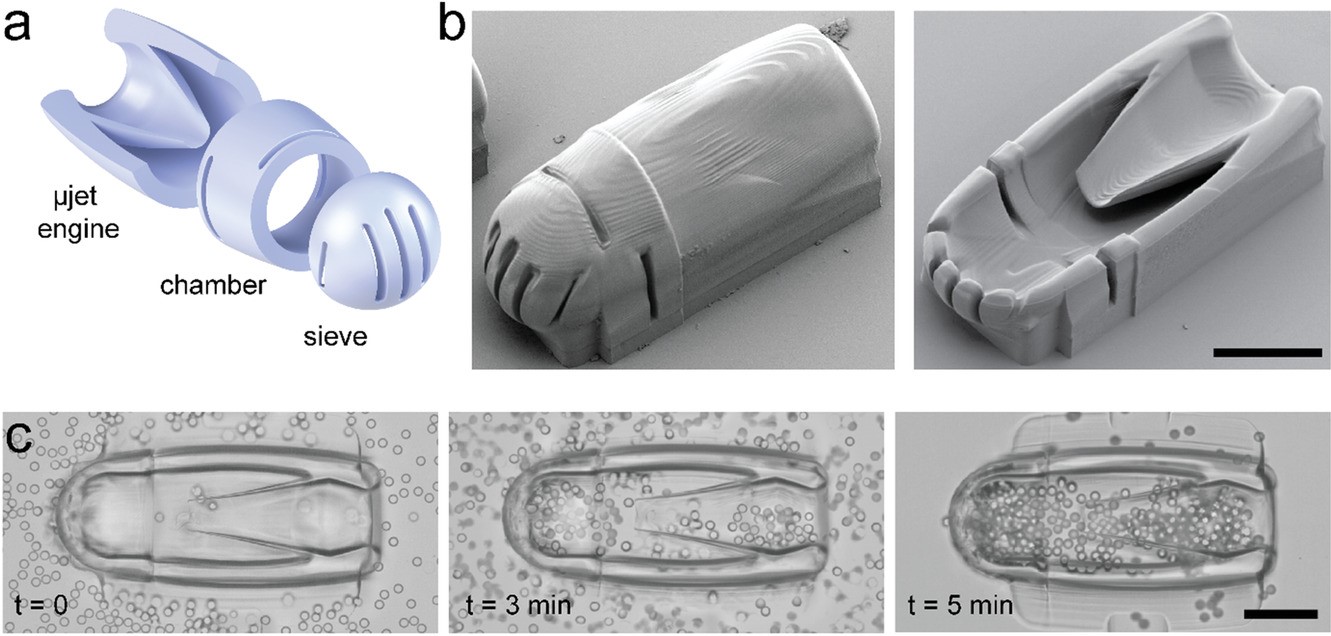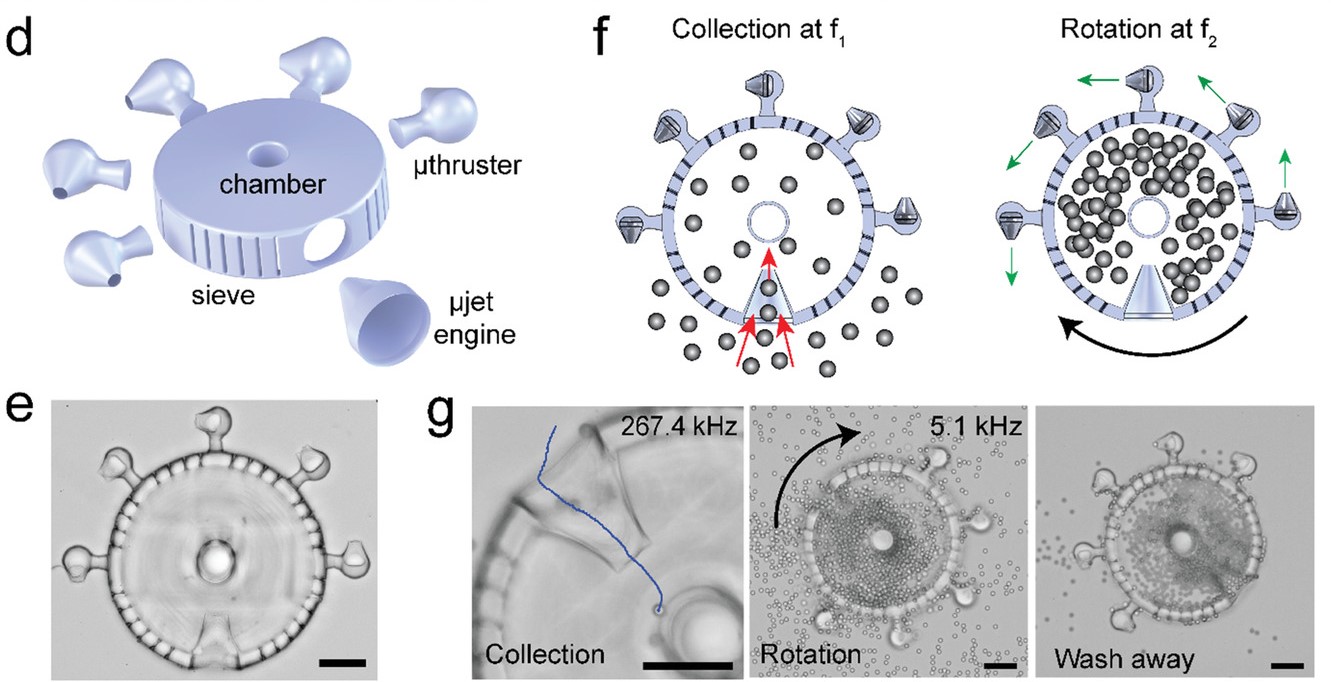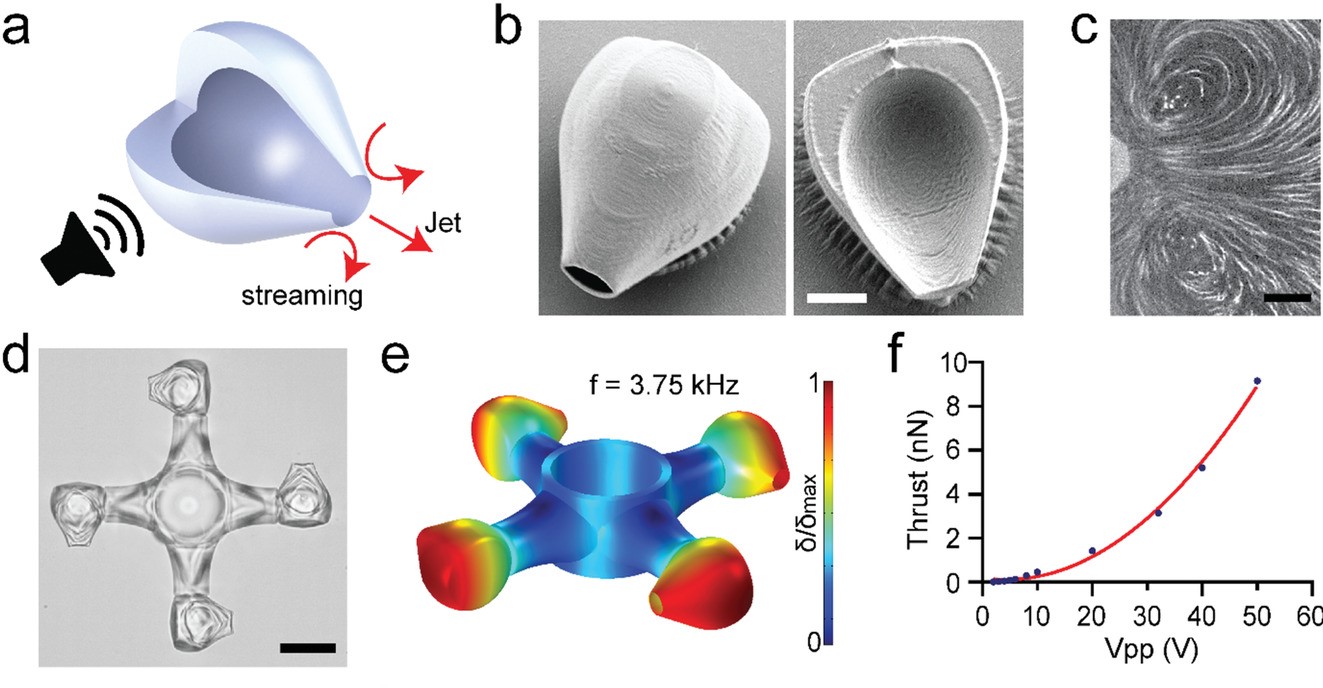A team of researchers from the Swiss Federal Institute of Technology Lausanne (EPFL) have developed a mechanical microdevice capable of biopsy (cell collection) and drug delivery when implanted in human skin.
The implant, just a few microns in width, is powered by what is called an “acoustic microengine”, a 3D nanoprinted pump made of hydrogel. The biocompatible material has the same stiffness as human skin and can be remotely actuated via ultrasound, eliminating the need for cumbersome wires and cables which can be infeasible at such small scales.

Microfluidic implants for pharmacology
We are at the point where mechanical systems capable of microfluidic control are possible, and we see such systems employed for many in-vitro biomedical devices. The issue is that many of these devices still rely on bulky pumps and compressors that require tethering to their power sources. A major challenge until now has been the development of a remote-controlled microfluidic system, one that can ‘roam free’ alongside its in-vivo host.
A device such as this would be required to determine precise timings, durations, and dosages for drug delivery. Alternatively, it could also collect small volumes of fluids and local cell cultures in a non-invasive manner for diagnostic purposes. Remote control has previously been achieved with small batteries and magnetic induction, but these devices are still manufactured in the centimeter range. With the limitations of today’s power storage technology, further miniaturization calls for a completely mechanical assembly to replace any electronics, perhaps one that utilizes the programmable nature of hydrogels.
The ultrasound-actuated microdevice
Using a Nanoscribe two-photon lithography system, together with some heavy computational simulations, the team produced a spaceship-esque device comprising six different engines. The main engine, the µjet, is responsible for depositing and collecting small volumes of matter while the five surrounding µthrusters enable the device to rotate in its suspension fluid as and when needed.
Using mechanical resonance from varying frequencies of ultrasound, the researchers can carefully control which of the engines are actuated. When an engine is operational, it propels the device using the fluid flow it pumps.

Murat Kaynak, lead author of the study, states: “We have freed microfluidics technology from its electronic and external constraints. Microfluidic devices can now be injected into human tissue and used to greatly enhance biochemical analysis thanks to the tunability of hydrogels.”
The EPFL team has found the injection of the device can be done with minimal invasiveness, but its extraction, with its full payload still in-tact, has proven more difficult. They plan to move on from in-vitro experiments to in-vivo studies in the near future.

Further details of the study can be found in the paper titled ‘Addressable Acoustic Actuation of 3D Printed Soft Robotic Microsystems’. It is co-authored by Murat Kaynak, Pietro Dirix, and Mahmut Selman Sakar.
Nanofabrication techniques have come a long way over the years. Researchers from the Karlsruhe Institute of Technology (KIT) recently developed a novel photoresist, a printing ink for two photon lithography, capable of self-assembly. Also utilizing a Nanoscribe machine, the team used its novel material to 3D print a hollow Ulbricht sphere just 800 microns in diameter. With SEM imaging, it was found that the structure was lined with cavities in the nano-range, showing great potential for microoptics applications.
Elsewhere, in Vienna, polymerization specialist UpNano recently launched a novel two-photon technology utilizing a high-power laser. The part serves to speed up the printing process with nano and microscale resolutions across 12 orders of magnitude, enabling small part fabrication down to the micrometer.
Subscribe to the 3D Printing Industry newsletter for the latest news in additive manufacturing. You can also stay connected by following us on Twitter and liking us on Facebook.
Looking for a career in additive manufacturing? Visit 3D Printing Jobs for a selection of roles in the industry.
Featured image shows the 3D printed acoustic microengine. Image via EPFL.


